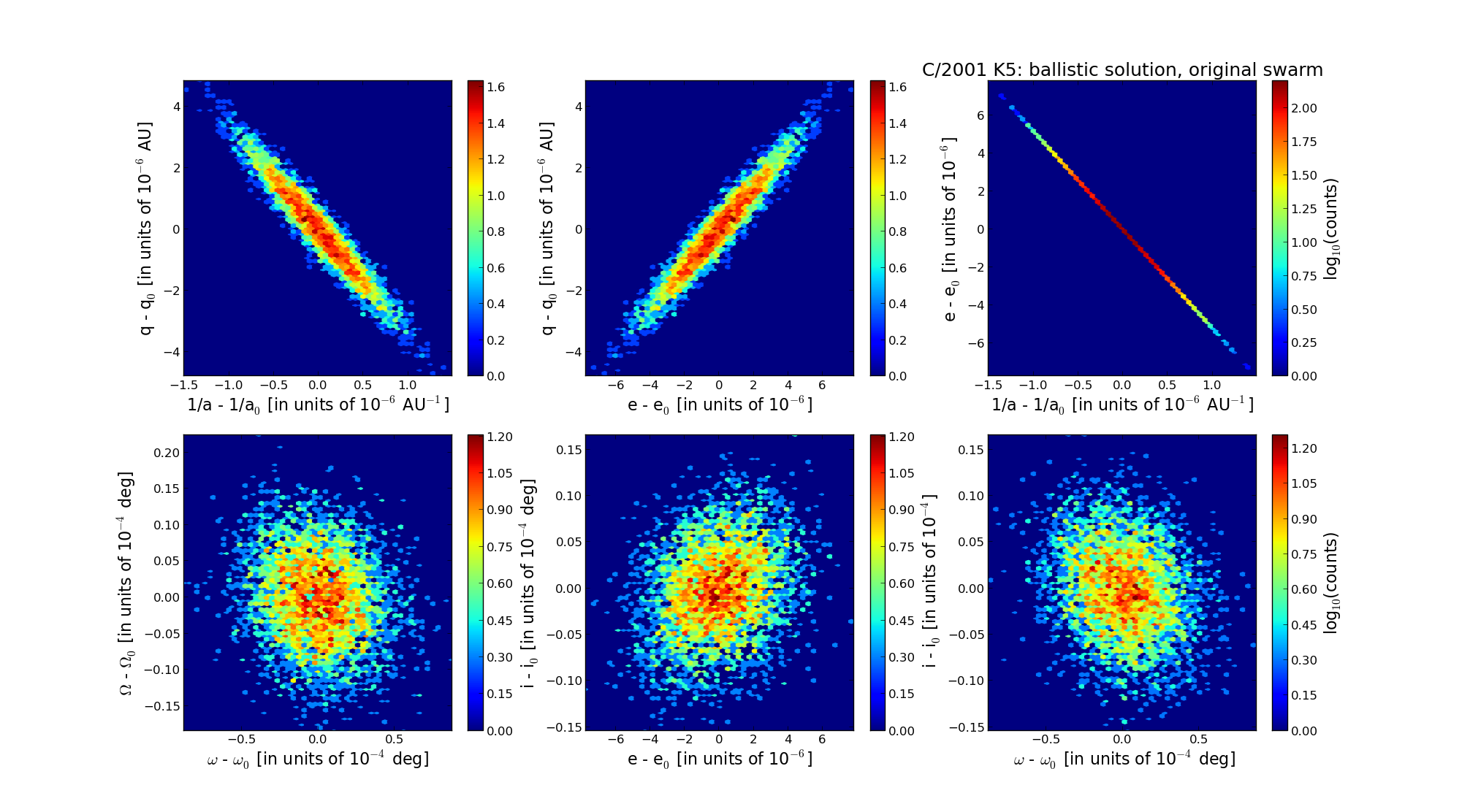| Solar System Dynamics & Planetology Group |
 |
C/2001 K5 LINEAR |  |
| Solar System Dynamics & Planetology Group |
 |
C/2001 K5 LINEAR |  |
| number of observations | 3402 |
| number of residuals | 6736 |
| data interval | 2001 Apr. 30 — 2004 Nov. 25 |
| rms [arcsec] | 0.66 |
| orbit quality class | 1a+ |
| Epoch (TT) | 20021013.0 | = JD 2452560.5 |
| time of perihelion passage (TT) | 20021011.769734 | ± 0.000225 |
| perihelion distance | 5.18425260 | ± 0.00000140 |
| eccentricity | 0.99962590 | ± 0.00000210 |
| argument of perihelion [deg] | 47.056315 | ± 0.000023 |
| longitude of the ascending node [deg] | 237.461926 | ± 0.000006 |
| inclination [deg] | 72.593297 | ± 0.000005 |
| inverse semimajor axis [10-6 au-1] | 72.16 | ± 0.41 |

| Epoch (TT) | 16970325 | |
| time of perihelion passage (TT) | 20021011.974538 | ± 0.000225 |
| perihelion distance | 5.18958159 | ± 0.00000140 |
| eccentricity | 0.99994997 | ± 0.00000210 |
| argument of perihelion [deg] | 47.066240 | ± 0.000023 |
| longitude of the ascending node [deg] | 237.490666 | ± 0.000006 |
| inclination [deg] | 72.541315 | ± 0.000005 |
| inverse semimajor axis [10-6 au-1] | 9.64 | ± 0.41 |
| Epoch (TT) | 23070217 | |
| time of perihelion passage (TT) | 20021012.477784 | ± 0.000226 |
| perihelion distance | 5.18717324 | ± 0.00000144 |
| eccentricity | 1.00049165 | ± 0.00000210 |
| argument of perihelion [deg] | 47.114383 | ± 0.000023 |
| longitude of the ascending node [deg] | 237.451142 | ± 0.000006 |
| inclination [deg] | 72.550141 | ± 0.000005 |
| inverse semimajor axis [10-6 au-1] | -94.78 | ± 0.41 |